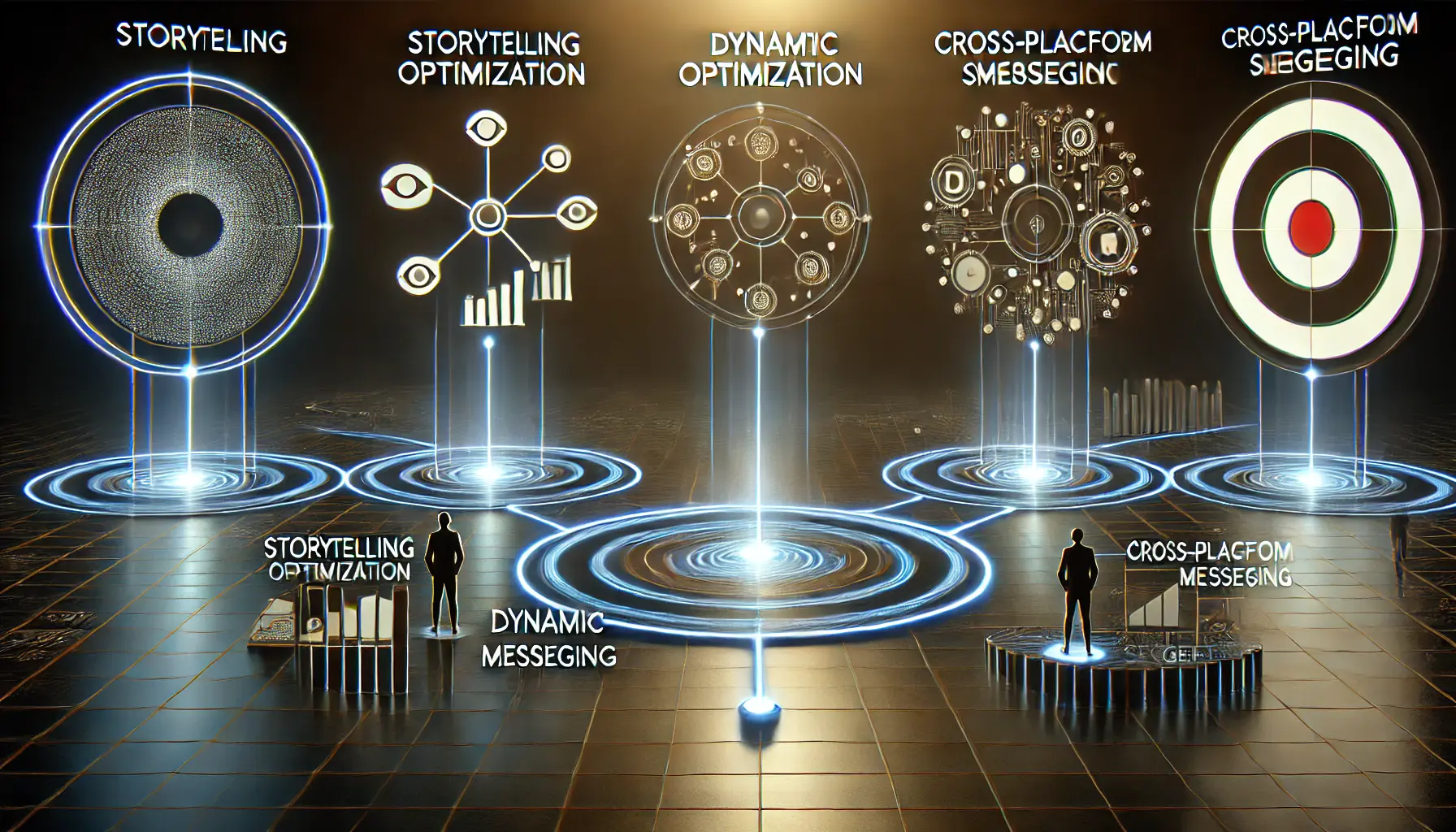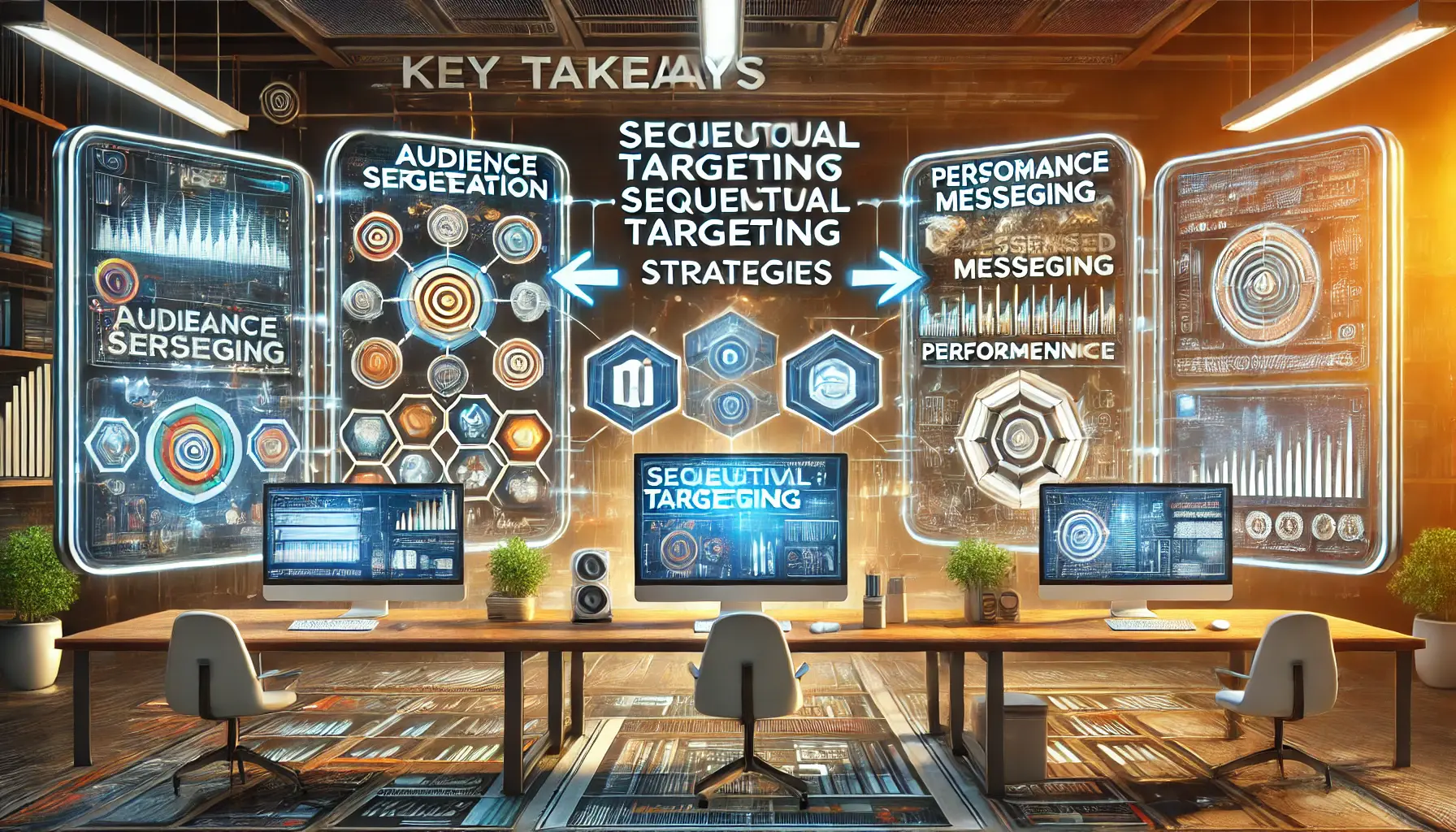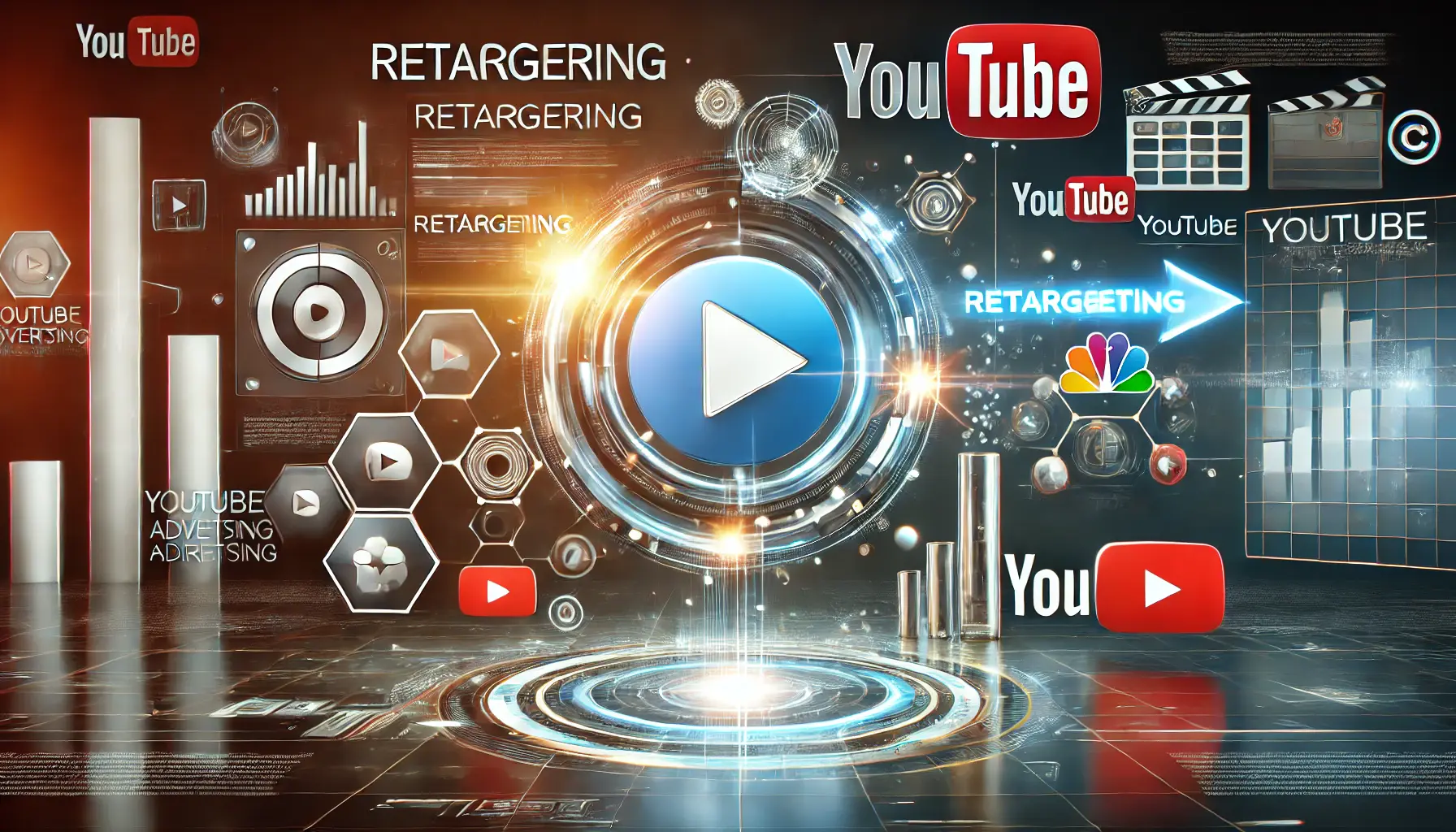In this changing phase of digital marketing, there is huge competition that compels one to innovate in order to glue their audience towards themselves.
Sequential targeting is one such powerful approach that helps an advertiser create highly personalized and powerful ad experiences for users.
By offering value to each of them through building sequential ads, it secures a certain conversion at the end of the process for businesses.
In this article, we are going to talk about what sequential targeting is, its benefits, and how you can use it to maximize your display advertising success.
- Understanding Sequential Targeting in Display Advertising
- Key Benefits of Implementing Sequential Targeting
- Four Effective Sequential Targeting Strategies
- Implementing Sequential Targeting in Google Ads
- Real-World Examples of Successful Sequential Targeting
- Maximizing Success with Sequential Targeting in Display Ads
- Frequently Asked Questions about Sequential Targeting in Display Ads
Understanding Sequential Targeting in Display Advertising
Sequential targeting in display advertising is a method where ads are delivered in a specific order to a targeted audience.
Unlike traditional advertising, which often relies on generic, one-off ads, sequential targeting crafts a narrative or logical sequence that connects with the viewer’s mindset and stage in the buyer’s journey.
This approach is particularly effective in fostering deeper engagement and driving desired actions.

Illustration highlighting the structured approach and significance of sequential targeting in marketing.
Definition and Importance of Sequential Targeting
Sequential targeting presents a sequence of ads to the users according to a predetermined order.
It allows advertisers to tell their stories, educate their audiences, and nurture leads over time.
This shifts the focus from interaction in a single form to a cumulative experience, thus creating more meaningful connections with potential customers.
The importance of sequential targeting lies in its ability to create contextually relevant ad experiences.
By addressing users’ needs and interests at different stages of their journey, businesses can significantly improve their campaign performance and ROI.

Visual representation of the evolution from traditional advertising to sequential targeting.
How Sequential Targeting Differs from Traditional Methods
While traditional advertising tries to reach the highest number of persons with one ad, this approach works for awareness but doesn’t have the depth of relationship-building with the audience.
Sequential targeting is all about quality over quantity: delivering a personalized message to a well-defined audience.
- Personalization: Audience data is utilized by sequential targeting for the customization of messages toward select segments, and there may also be some methods that still rely on broad messaging.
- Storytelling: By engaging users over a period of time with this method, a story in the ad series can be unraveled piece by piece, a structure that just cannot apply to traditional singular ads.
The magic of sequential targeting unlocks a whole new dimension whereby the ads will connect with your target audience at a deeper level, inspiring them to take action.
Sequential targeting crafts a narrative, aligning ads with the buyer’s journey for meaningful engagement.

Illustration highlighting the core advantages of sequential targeting in advertising strategies.
Key Benefits of Implementing Sequential Targeting
Utilizing sequential targeting in your display advertising comes with several important benefits that help extend your marketing effort and serve better for your business goals in several ways.

Illustration of dynamic ad experiences fostering audience engagement and re-engagement.
Enhanced Audience Engagement and Re-engagement
Sequential targeting allows you to serve a series of personalized messages that take your audience through a story, engaging them at every touchpoint.
By delivering relevant content tailored to their interests and behaviors, you can hold users’ attention and drive further engagement with your brand.
- Storytelling: With sequential ads, you have the ability to create a story that keeps your audience engaged with your brand, making it more memorable and relatable.
- Personalization: Messages that are personalized based on user behavior and preferences ensure a higher likelihood of re-engagement and conversion.

Illustration of the impact of personalized messaging on boosting conversion rates.
Enhanced Conversion Rates through Personalized Messaging
By addressing the particular needs and concerns of your audience at each stage of the buying process, sequential targeting can significantly increase the rate of conversion.
Personalized messaging ensures that potential customers receive the right information at the right time, enabling informed decision-making and encouraging purchases.
- Relevant Content: Providing content that aligns with the stage a user is currently in within the buyer’s journey increases the likelihood of conversion.
- Building Trust: Seamless and relevant messaging builds trust, making users more comfortable with completing a purchase.
Adding sequential targeting to your display advertising mix can result in more meaningful interactions with your audience and higher engagement, ultimately translating to better conversion rates.
Benefits include increased engagement, higher conversions, and tailored ad experiences, enhancing ROI.

Visual representation of four key sequential targeting strategies in digital marketing.
Four Effective Sequential Targeting Strategies
Implementing sequential targeting in your display advertising campaigns can significantly enhance audience engagement and conversion rates.
Here are four effective strategies to consider:

Illustration of storytelling through ad sequences in digital marketing campaigns.
1. Storytelling through Ad Sequences
Craft a compelling narrative by delivering a series of ads that tell a cohesive story.
Each ad should build upon the previous one, guiding the audience through a journey that highlights your brand’s value proposition.
- Introduction: Introduce your brand or product to create awareness.
- Development: Showcase features and benefits to build interest.
- Climax: Address potential objections and introduce solutions.
- Conclusion: Provide a strong call-to-action to ensure conversions.

Visual representation of Dynamic Creative Optimization in sequential ads for personalized marketing.
2. Dynamic Creative Optimization in Sequential Ads
Leverage DCO to automatically customize ad creative based on user data and behavior.
This personalization of each ad in the sequence increases relevance and engagement.
- Real-Time Adaptation: Update creative elements like images, text, and calls-to-action based on user interactions.
- Enhanced Personalization: Deliver content that aligns closely with individual user preferences.

Illustration of cross-platform sequential messaging for consistent user engagement.
3. Cross-Platform Sequential Messaging Techniques
Engage your audience across multiple platforms and devices to reinforce your message and maintain consistency.
- Multi-Device Targeting: Reach users on desktops, tablets, and smartphones.
- Platform-Specific Content: Customize ad formats and messages to suit each platform’s unique environment.

Illustration of data-driven audience segmentation for personalized sequential campaigns.
4. Data-Driven Audience Segmentation for Sequential Campaigns
Use analytics data to segment your audience based on demographics, behaviors, and engagement levels.
Tailor your ad creative to directly address their unique needs and interests.
- Behavioral Segmentation: Group users by their actions and interactions with your brand.
- Demographic Segmentation: Create ad content that resonates with specific age groups, genders, or locations.
These sequential targeting strategies can help you create more targeted and successful display advertising campaigns that resonate with your audience and drive meaningful results.
Strategies like storytelling, dynamic optimization, and audience segmentation ensure impactful ad campaigns.

Illustration of implementing sequential targeting in Google Ads campaigns.
Implementing Sequential Targeting in Google Ads
Integrating sequential targeting into your Google Ads campaigns can enhance audience engagement and improve conversion rates.
Here’s how you can set up and optimize ad sequencing within the platform.

Illustration of setting up and managing ad sequencing campaigns in a digital ad platform.
Setting Up Ad Sequencing Campaigns
Start by logging into your Google Ads account.
Click on ‘+ New campaign,’ then choose ‘Video’ and select ‘Ad sequence’ as the campaign subtype.
This setup allows you to showcase multiple video ads in a specific order to your target audience, enabling you to weave a continuous story that guides them through your marketing message step by step.
- Define Your Sequence: Identify the number of steps in your ad sequence and the content to be shown in each step. Each step corresponds to a separate ad group within the campaign.
- Choose Your Ad Formats: Decide on the ad format that best suits your campaign objectives and audience preferences, such as skippable in-stream ads or bumper ads.
- Set Bidding Strategy: Opt for a bidding strategy that aligns with your goals, like Target CPM for brand awareness or Target CPV for engagement.

Illustration of leveraging audience targeting tools in Google Ads for customized ad campaigns.
Leverage Audience Targeting on Google
Google Ads provides robust audience targeting options to ensure your sequential ads reach the right viewers.
- Audience Segmentation: Distinctly target your audience based on demographics, interests, and behaviors to enable effective ad sequencing.
- Remarketing Lists: Use remarketing lists to re-engage users who have previously interacted with your brand by delivering sequenced messages that build upon their prior experiences.
- Custom Intent Audiences: Create custom intent audiences to target users actively searching for products or services similar to yours, increasing the relevance of your ad sequence.

Illustration of monitoring and optimizing sequential ad performance in digital marketing.
Monitoring and Optimizing Sequential Ad Performance
Regular monitoring and optimization are essential to the success of your sequential targeting campaigns.
- Performance Metrics: Track key performance indicators such as view rates, click-through rates (CTR), and conversions to analyze the effectiveness of each ad in the sequence.
- A/B Testing: Conduct A/B tests with various ad creatives, sequences, and targeting options to determine the most effective combinations.
- Adjust Frequency Caps: Manage the frequency of ad exposures to prevent ad fatigue and keep your audience engaged throughout the sequence.
By following these steps, you can effectively implement sequential targeting in your Google Ads campaigns, delivering personalized and engaging ad experiences that resonate with your audience and drive meaningful results.
Utilize Google Ads tools to structure ad sequences, optimize performance, and deliver targeted messaging effectively.

Illustration of successful real-world sequential targeting campaigns across various industries.
Real-World Examples of Successful Sequential Targeting
Sequential targeting in display advertising has been effectively implemented across a wide range of industries.
Let’s explore some real-world examples that demonstrate its success in practice.

Illustration of a SaaS company utilizing sequential digital retargeting for personalized ad engagement.
Case Study: SaaS Company Leverages Sequential Digital Retargeting
A SaaS company aiming to drive more traffic to their website from potential customers utilized data-informed sequential targeting.
They reached three unique target audiences with creative storylines tailored to each.
Each audience experienced a different ad sequence, moving them down the funnel to increase engagement and completion.
This approach resulted in over 580,000 impressions and more than 3,300 page visits at a cost per acquisition of $16 per page visit.

Illustration of a high-end skincare brand utilizing multi-platform sequential retargeting for personalized ad engagement.
Case Study: High-End Skincare Brand’s Multi-Platform Sequential Retargeting
A luxury skincare brand launched a new product line and used multi-platform sequential retargeting to drive online sales.
By delivering a series of tailored ads across various platforms, they effectively guided potential customers through the purchasing journey.
This strategy highlighted the power of storytelling in sequential retargeting, leading to increased engagement and sales.

Illustration of Caulipower’s sequential messaging campaign targeting users based on previous interactions.
Case Study: Caulipower’s Sequential Messaging Campaign
Caulipower, a brand specializing in cauliflower-based products, sought to boost sales among relevant shoppers, including lapsed and competitive buyers.
By employing sequential messaging, they delivered high-value offers only to those who had seen their TV ad multiple times but had not yet made a purchase.
This strategy enabled efficient budget management and effective audience engagement, resulting in a successful campaign.
These examples highlight the agility and effectiveness of sequential targeting in display advertising.
By creating ad sequences tailored to specific audience segments, businesses can enhance personalization, improve conversion rates, and achieve their overall marketing objectives.
Case studies reveal how sequential targeting drives engagement, boosts conversions, and optimizes ad budgets.

Illustration of maximizing success with sequential targeting in display ads through strategic optimization.
Maximizing Success with Sequential Targeting in Display Ads
Sequential targeting has emerged as a transformative approach in display advertising, allowing marketers to engage audiences meaningfully and improve conversion rates.
By crafting personalized ad sequences, businesses can effectively guide users through their marketing funnels, achieving remarkable results.

Illustration of the key elements and strategies in sequential targeting that contribute to successful ad campaigns.
Key Takeaways from Sequential Targeting Strategies
The power of sequential targeting lies in how it builds a narrative and conveys personalized messages that resonate with each audience segment.
In this article, we explored several aspects of sequential targeting, including:
- Understanding Sequential Targeting: A process of structured ad delivery to nurture deeper engagement and align with the user journey.
- Benefits: Increased audience engagement, higher conversion rates, and the ability to create highly personalized advertising experiences.
- How to Take Full Advantage: Leveraging tools like Google Ads to create ad sequences, manage audience segments, and monitor campaign performance.
- Real-Life Applications: Case studies across industries showing how sequential targeting helps achieve business objectives.

Illustration of why sequential targeting matters in digital marketing by engaging users at different stages of their journey.
Why Sequential Targeting Matters
In today’s competitive digital landscape, standing out requires more than generic advertising strategies.
Sequential targeting enables brands to:
- Create Memorable Experiences: By crafting stories through ads, brands leave a lasting impression on their audience.
- Drive Higher ROI: Personalized and strategically placed ads reduce wastage and enhance conversion rates.
- Foster Customer Loyalty: Relevant and engaging messaging builds trust and encourages repeat interactions.

Illustration of the steps involved in implementing sequential targeting in digital marketing campaigns.
How to Put Sequential Targeting into Place
If you are ready to implement sequential targeting in your campaigns, here’s how to get started:
- Analyze Your Audience: Understand their needs, preferences, and behavior to construct impactful sequences.
- Leverage Tools Like Google Ads: Use advanced features, such as audience segmentation and ad sequencing, to create seamless campaign flows.
- Monitor and Optimize: Track key performance indicators regularly to fine-tune your strategies and ensure maximum output.
Sequential targeting is not just a buzzword but an effective strategy for reaching your audience with depth.
Applying these methods can elevate your display advertising game and help you achieve the desired marketing results.
Focus on audience analysis, storytelling, and consistent optimization to maximize sequential targeting success.

Illustration of frequently asked questions regarding sequential targeting in display ads, with a focus on campaign data and analysis.
Your campaigns can be managed by an agency specialized in Google Ads, check out our service page.
Frequently Asked Questions about Sequential Targeting in Display Ads
Sequential targeting in display advertising is a strategy that involves delivering a series of ads to the same user in a specific order, guiding them through a predetermined marketing narrative.
This approach enhances engagement and conversion rates by presenting tailored messages that align with the user’s journey.
Sequential targeting delivers ads in a specific order to guide users through a marketing narrative, enhancing engagement and conversions.
While retargeting shows the same ad to users who’ve interacted with a brand, sequential targeting presents a series of ads in a planned sequence to tell a cohesive story.
Benefits include improved audience engagement, higher conversion rates, personalized user experiences, and more effective storytelling in ad campaigns.
Yes, sequential targeting can be implemented across various platforms, including social media, display networks, and video channels, to maintain consistent messaging.
Effectiveness can be measured by tracking metrics such as engagement rates, conversion rates, click-through rates, and analyzing user behavior throughout the ad sequence.
Sequential targeting can benefit many businesses, especially those with complex products or services that require educating potential customers over time.
Challenges include creating compelling ad sequences, accurately segmenting audiences, managing frequency to avoid ad fatigue, and ensuring consistent messaging across platforms.
Develop a clear narrative, understand your audience’s journey, tailor messages to each stage, and use engaging creatives to maintain interest throughout the sequence.
Platforms like Google Ads and Facebook Ads Manager offer features for setting up ad sequences, audience segmentation, and performance tracking to facilitate sequential targeting.











